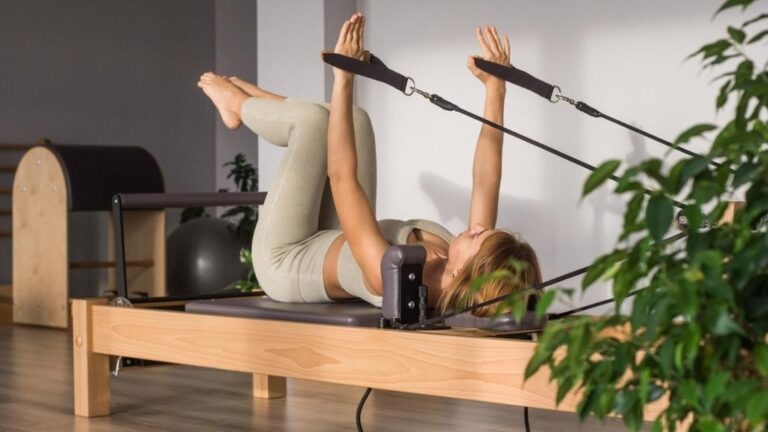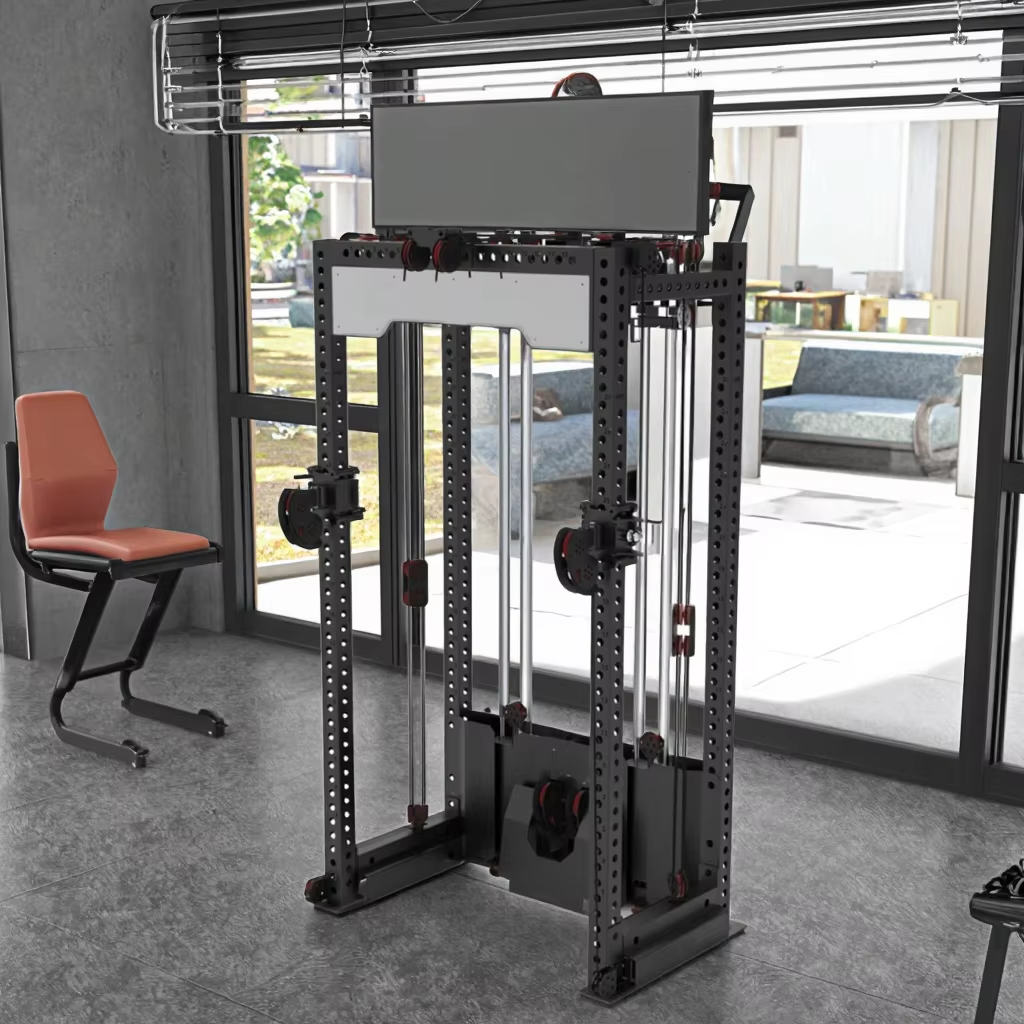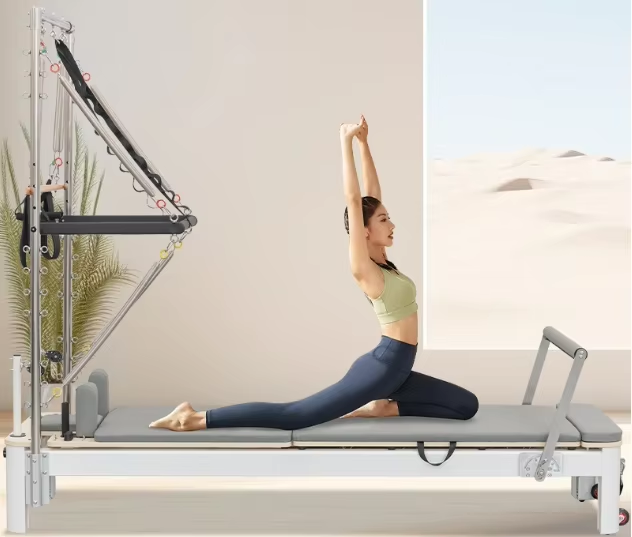Fitness Equipment Manufacturers & Wholesale

Unlock Your Pilates Reformer Potential: 5 Yoga Poses for Core Mastery
As manufacturers of premium Pilates Reformer Machines, we know that a strong, stable core is the engine of every effective workout—whether you’re on the mat or on the carriage.
Yet, a surprising industry statistic reveals a common blind spot: 87% of fitness enthusiasts are unaware they have insufficient core strength. Think of your core muscles as the foundation of a skyscraper; without a solid base, even the most advanced movements can lead to instability and injury.
The good news? The power to build this foundation is hidden in plain sight, right on the humble yoga mat. Integrating specific, foundational yoga poses can dramatically activate and wake up the deep core muscles often overlooked in traditional abdominal training, giving you unparalleled control and precision on your Pilates Reformer.
🗝️ The Core Revolution: Why Your Mat Work Matters
Your core is more than just a six-pack; it’s a Powerhouse, a term Joseph Pilates himself used to describe the complex network of muscles—including the transversus abdominis, obliques, and pelvic floor—that stabilize the torso.
- Injury Prevention: Data from the fitness industry suggests that 83% of yoga-related injuries stem from a “core disconnect.” A stronger core acts as your invisible armour, protecting your spine and joints during both yoga and high-resistance Reformer work.
- Precision & Power Transfer: Your core is the “ATM machine” of athletic performance. Developing its stabilizing function through yoga enhances the smooth, controlled power transfer required for challenging exercises like the Long Spine Massage or Snake/Twist on the Reformer.
- Mastering the Deep Breath: True core strength begins with the diaphragmatic breath. Learning to breathe deep, engaging your transverse abdominis, is the critical first step in both yoga and the fundamental Pilates principles of Centering and Breathing.
✨ 5 Yoga Poses to Instantly Upgrade Your Core Stability
Ready to unlock a deeper level of stability and control on your Pilates Reformer? Incorporate these five “Golden Poses” into your routine. They’re designed to teach deep, sustained engagement over brute force.
1. Balancing Table Pose (Bird-Dog)
- The Goal: Spinal stability and anti-rotation.
- Pilates Connection: The foundation for single-leg work like Single-Leg Circles or Kneeling Abs on the Reformer. It teaches you to keep your pelvis level when limbs move.
- Pro Tip: Imagine you have a hot cup of coffee resting on your lower back. Maintain total stillness as you extend the opposite arm and leg. No shaking allowed!
2. Side Plank Evolution (Vasisthasana)
- The Goal: Oblique strength and lateral stability.
- Pilates Connection: Essential for mastering the Side Bend and other oblique-intensive Reformer exercises. It stabilizes the entire side of your torso.
- Pro Tip: Push your bottom rib cage up towards the ceiling, actively lifting out of your shoulder. Start with a bent-knee variation if needed, then progress to stacking your feet or even attempting a Side Plank with a Leg Circle.
3. Plank Transformation (Phalakasana)
- The Goal: Full-body integration and abdominal bracing.
- Pilates Connection: Directly translates to the control needed for Elephant or Stomach Massage on the Reformer.
- Pro Tip: Don’t just hold stiffly! Tuck your tailbone slightly towards your heels to engage the glutes, and imagine someone is about to punch you in the stomach—this activates your deep transverse abdominis.
4. Boat Pose (Navasana)
- The Goal: Dynamic strength for the Rectus Abdominis and Hip Flexors.
- Pilates Connection: The mat-work cousin of the Hundred or the Teaser. It teaches the crucial “C-Curve” and spinal flexion with core control.
- Pro Tip: Focus on the awareness of “chest to pubic bone”—maintaining a slight lift in your sternum while engaging the deep lower abs. If you’re shaking violently, bend your knees or keep your hands on the mat.
5. Chair Pose Survival Guide (Utkatasana)
- The Goal: Connecting the core to the lower body (Glutes & Quads).
- Pilates Connection: Strengthens the deep hip stabilizers needed for standing Reformer work, like Lunges or Semi-Circle on the Arc.
- Pro Tip: Shift your weight back into your heels, and imagine you are sitting down onto an invisible chair. Engage your core to prevent your lower back from arching excessively. Sink low, stay steady!
⚠️ Avoid the Three Core Mistakes
As you practice, remember that core strength is about quality, not quantity. Be mindful to avoid these three common pitfalls, which are shared across both yoga and Pilates:
| Mistake | Description | What to Do Instead |
| Faulty Breathing | Holding your breath or relying solely on shallow, chest breathing. | Practice diaphragmatic breathing (inhale fills the belly, exhale draws navel to spine) in every pose. |
| Compensation | Using your neck (turtle neck) or visibly shaking/hiking your hips to ‘cheat’ the movement. | Modify the pose (e.g., knee down in Side Plank) until you can achieve stillness and control. |
| Ego-Driven Practice | Forcing your body into an advanced shape or holding for excessive time. | Prioritize Proprioception (body awareness) over depth. A strong core should feel like a spring, able to lengthen and contract, not just a rigid plank. |
Upgrade Your Powerhouse with Our Reformers
A strong mat practice is the perfect preparation for the precision and resistance offered by a professional Pilates Reformer.
Our Pilates Reformer Machines are engineered for stability, smooth movement, and durability, providing the ultimate platform to challenge your newly activated core. Ready to take the next step from mat strength to machine mastery?
Which of these 5 poses will you add to your warm-up today to feel the core difference on your Reformer tomorrow?







